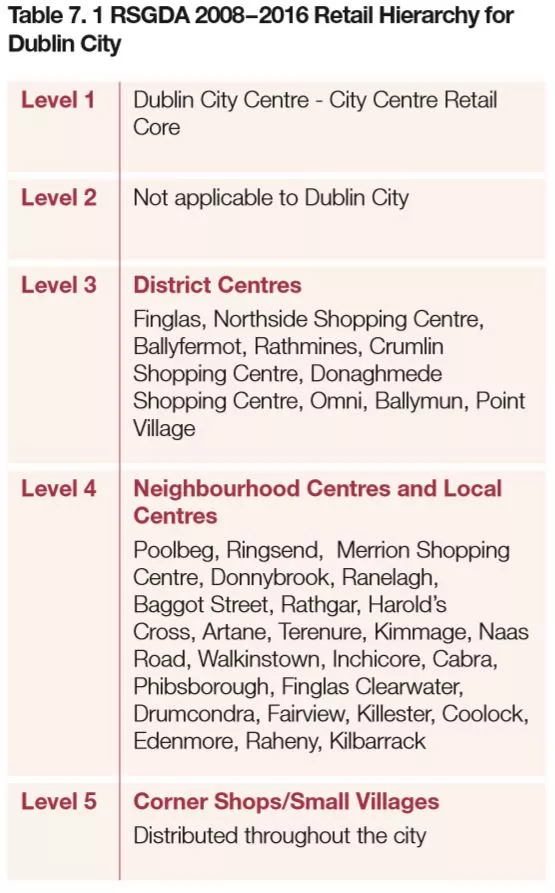7.4 Retail Guidance
7.4 Retail Guidance
Guidelines for Planning Authorities – Retail Planning – 2012
The Retail Planning Guidelines are a comprehensive retail planning and development framework update with 5 policy objectives, designed to:
1. Ensure retail development is plan-led
2. Promote city centre vitality through the sequential approach to development
3. Enable good quality development in appropriate locations so ensuring competitiveness
4. Facilitate a modal shift in retail access to non-private vehicle modes
5. Delivering quality urban design outcomes.
Retail Design Manual – 2012
gov.ie - Retail Design Manual April 2012 (www.gov.ie)
This is a companion document to the Guidelines detailed above (7.4) and is intended to guide planning authorities in formulating appropriate design polices and development management responses when dealing with retail issues. They also provide relevant parties with evidence-based quality principles to ensure that new retail development meets the highest standards for design, streetscape integration and connectivity.
This document, in turn, was framed by the document ‘Government Policy on Architecture 2009 – 2015’ (www.ahg.gov.ie) which places an emphasis on sustainable development of the environment through urban design and harmony with existing architectural heritage. Case studies are set out for each key principle of urban design.
The Retail Strategy for the Greater Dublin Area 2008-2016 (RSGDA)
The provisions of the RSGDA are incorporated into the Dublin City Retail Strategy and this city development plan. These guidelines were produced utilising data from the 2006 Census, coinciding with the peak period of economic and population growth and must be regarded in that context. It should be noted that they will be succeeded by the Regional Spatial and Economic Strategy as devised by the Eastern and Midland Regional Assembly, the replacement body for the GDA Regional Authority. Substantive strategic changes are not expected in terms of where retail development should be located, the hierarchal model to follow and the linkage to settlement and transport infrastructure.
The length of the recession has meant that much of the retail development anticipated during the 2008 – 2016 time period has not occurred and is only now tentatively commencing. Therefore, the floor-space thresholds detailed in the regional guidelines are still to be reached. When updated floorspace figures are provided by the Regional Spatial and Economic Strategy, they can be incorporated in the development plan. The Dublin City Retail Strategy, together with guidance on the scale, location of retail development, criteria for the assessment of retail applications, specific improvement policies for the premier retail streets in the retail core and design guidance, is set out in Appendix 3.
Three additional Key District Centres (Clongriffin/Belmayne, Phibsborough and Naas Road) (see Appendix 3 – District Centres – Level 3) are included as Level 3 centres on the basis that they are projected growth centres for population as set out in Chapter 2: ‘Vision and Core Strategy’.
